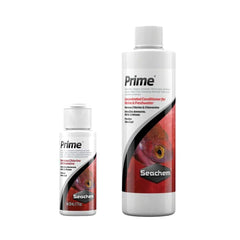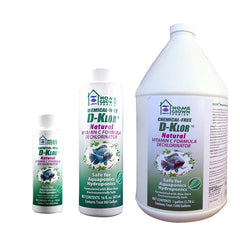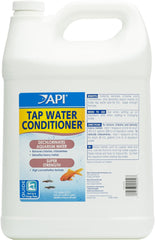Setting up your first aquaponics system is exciting, you’ve got your fish tank ready, the grow bed set, and the seedlings waiting. But there’s one crucial step many beginners overlook: making sure your water is chlorine-free before adding fish.
Tap water often contains chlorine or chloramine, chemicals designed to kill bacteria. That’s great for drinking water, but in aquaponics, those same chemicals can destroy beneficial bacteria, stress your fish, and stall plant growth before your system even starts cycling.
Dechlorinating your water is not just a precaution, it’s the first step in creating a balanced aquaponics system. Without it, your aquaponics setup can struggle from day one.
In this blog, you’ll learn:
- Why chlorine and chloramine are dangerous to aquaponics systems.
- How to identify which one is in your tap water.
- The safest, most effective methods to dechlorinate your water.
- How to maintain a chlorine-free environment long term.
By the end, you’ll know exactly how to protect your fish and plants while preparing your system for success.
And if you’re ready to go beyond the basics, this 5-hour Aquaponics Video Course will walk you through the entire process, from setting up your system and cycling your water to managing pH and nutrient balance, so you can build a thriving, self-sustaining system with confidence.
👉 Learn more about the Aquaponics Video Course here.
Understanding Chlorine and Chloramine in Tap Water
Before you start removing chlorine from your aquaponics water, it’s essential to understand what you’re dealing with, because not all tap water treatments are the same. Most municipal water systems use either chlorine or chloramine as disinfectants, and knowing the difference can save your fish and plants from unnecessary stress.
1. Chlorine: The Fast-Fading Disinfectant
Chlorine has been used for decades to keep tap water safe for human use. It’s powerful but volatile, meaning it naturally dissipates from water over time. If your local water source uses chlorine, you can often remove it simply by letting water sit for 24–48 hours, allowing it to evaporate.
However, that doesn’t mean you’re in the clear, residual chlorine can still damage sensitive bacteria in your biofilter and slow down the cycling process.
In aquaponics, even small traces of chlorine can:
- Burn fish gills and cause respiratory stress.
- Kill beneficial nitrifying bacteria that convert ammonia into nitrates.
- Lead to plant nutrient deficiencies due to poor bacterial activity.
2. Chloramine: The Longer-Lasting Challenge
As water systems modernized, many cities replaced chlorine with chloramine, a combination of chlorine and ammonia. Chloramine is more stable, which makes it ideal for long-distance water distribution but a persistent problem in aquaponics.
Unlike chlorine, chloramine does not evaporate when you let water sit. It requires special treatment, either through activated carbon filtration or chemical neutralizers designed to make water fish-safe.
In short:
- Chlorine = short-term problem, can dissipate naturally.
- Chloramine = long-term issue, requires deliberate removal.
How to Know Which One You Have
You can usually find out by checking your local water utility’s annual water quality report or by using a chlorine or chloramine test kit from an aquarium or hardware store. Testing takes just a few minutes and helps you choose the right dechlorination method later in this guide.
Understanding the type of disinfectant in your water is the first major step toward creating a stable aquaponics environment, because your fish, plants, and bacteria all depend on water that’s not just clean, but chemically balanced.

How to Test for Chlorine or Chloramine
Before you can safely remove chlorine from your water, you need to know what’s actually in it, chlorine or chloramine. Testing your water is a simple but crucial step that helps you choose the right dechlorination method and prevents unnecessary harm to your fish and plants.
Why Testing is Important
Many aquaponics beginners skip water testing, assuming their tap water is “fine.” Unfortunately, even low levels of chlorine (as little as 0.02 mg/L) can disrupt your nitrifying bacteria, while chloramine lingers much longer and continues to release ammonia into your system.
Testing ensures that you’re not guessing, you’re making informed decisions that keep your water chemistry balanced from the very start.
1. Get the Right Test Kit
You can find chlorine or chloramine test kits at:
- Aquarium supply stores
- Home improvement stores
- Online retailers (like GogreenAqponics.com or Amazon)
Look for kits labeled for aquarium or pond use, as they’re designed to detect very low concentrations suitable for aquaponics systems.
There are two common types:
- Test Strips:Quick and convenient; they provide instant color-based readings.
- Liquid Test Kits:More precise and recommended if you’re managing larger systems.
Tip: If your test kit detects total chlorine (combined chlorine and chloramine), and the reading doesn’t drop after 24 hours of letting water sit, you likely have chloramine.
2. Collect and Test a Water Sample
- Run your tap water for 2–3 minutes to clear standing water from pipes.
- Collect a sample in a clean, chlorine-free container (avoid reused bottles).
- Dip your test strip or add the testing reagent per the kit’s instructions.
- Compare the color result against the chart provided.
Record your results as this gives you a baseline to compare future tests, especially after using a dechlorination method.
3. Interpret the Results
Here’s a quick guide to what your readings mean:
|
Result |
What It Means |
Recommended Action |
|
0.00 mg/L |
Water is safe for aquaponics. |
You can use it directly. |
|
0.01–0.05 mg/L |
Low chlorine may dissipate naturally. |
Let sit for 24–48 hours. |
|
0.10–0.50 mg/L |
Moderate chlorine, not safe for fish. |
Use activated carbon filter or conditioner. |
|
0.50+ mg/L |
High chlorine/chloramine. |
Treat immediately before system use. |
4. Double-Check After Treatment
Once you’ve dechlorinated your water, always test again to confirm chlorine levels have dropped to zero. This step ensures your water is truly fish-safe before cycling begins.
The Different Methods of Dechlorinating Water
Below are the three methods of dechlorinating water. Each of these methods offers advantages and disadvantages that allow you to select the one that best suits your needs and preferences.
1. Chlorine Evaporation
Chlorine evaporation, or letting the water set, is a natural and chemical-free method of dechlorinating water. This methodinvolves allowing tap water to sit in an open container for a period of time. During this time, chlorine will naturally dissipate as it is exposed to air.
To facilitate chlorine evaporation:
- Simply fill a container, like a bucket or tank, with tap water and let it sit exposed to the air. The surface area and water movement can affect the speed of evaporation.
- Usually, it takes 24 to 48 hours for chlorine to completely evaporate from tap water. This time frame can be shorter or longer based on factors like temperature, humidity, and initial chlorine concentration.
Advantages:
- Low-cost and straightforward.
- Suitable for smaller aquaponics systems.
Disadvantages:
- Slow process.
- Not suitable for quickly dechlorinating large volumes of water.
2. Using Dechlorination Agents
The dechlorination agents are chemicals specifically designed to neutralize chlorine and chloramines (a more stable form of chlorine). The most commonly used dechlorination agents are sodium thiosulfate and sodium bisulfite, which are available in liquid or powder form.
This method is a fast and effective method that provides almost instant results and is suitable for small and large aquaponics systems. However, this method requires a small investment, as you may need to purchase dechlorination agents. It is also important to follow proper dosing guidelines to avoid over- or under-dosing.
Advantages:
- Fast and effective.
- Applicable to various system sizes.
Disadvantages:
- Requires purchasing dechlorination chemicals.
- Careful dosing is essential to prevent overdosing or inadequate treatment.
3.Activated Carbon Filtration
Activated carbon filters are often used in aquariums and water purification systems and rely on activated carbon to remove chlorine and impurities from water. Activated carbon is highly porous and has a large surface area, which allows it to absorb chlorine molecules as water passes through the filter. The chlorine molecules adhere to the carbon's surface, effectively removing them from the water.
Advantages:
- Continuous dechlorination.
- Enhances overall water quality.
Disadvantages:
- Initial setup and maintenance costs.
- You need to regularly replace the activated carbon media.
Our Recommended Dechlorinators for Aquaponics
The tap water you use to fill up your fish tank may contain chlorine or chloramine, which can be harmful to the fish and plants. To remove chlorine, you need to treat your water with a dechlorinator or water conditioner. Here are some of our recommended dechlorinators for aquaponics.
1.Seachem Prime
Seachem Prime Dechlorinator is a must-have for aquaponics enthusiasts. It effectively removes chlorine, detoxifies harmful chemicals, and maintains stable water conditions. The concentrated formula is cost-effective, and it doesn't harm beneficial bacteria. It's an essential tool for keeping your fish and plants healthy in your aquaponics system. Highly recommended!
2.Crystal Clear Vanish Plus Liquid Dechlorinator
Crystal Clear Vanish Plus Liquid Dechlorinator effectively eliminates chlorine and chloramine from tap water. Its easy-to-use liquid form allows for precise dosing, and a little goes a long way, making it cost-effective. It also helps maintain stable water conditions and doesn't harm the beneficial bacteria, which is crucial for the nitrogen cycle.
3.Tetra AquaSafe Plus Water Conditioner
This product efficiently removes chlorine and chloramine from tap water, which ensures the safety of fish in the tank. Its easy-to-measure dosing cap makes it a breeze to use, and it's cost-effective because of its concentrated formula. The Tetra AquaSafe Plus Water Conditioner also helps maintain stable water conditions and doesn't interfere with the beneficial bacteria in the system.
4.Home Grown Ponics Instant D-Klor
The Home Grown Ponics Instant D-Klor excels at swiftly neutralizing chlorine and chloramine in tap water. It's an easy-to-use design makes dosing a breeze, and its cost-effectiveness is a bonus. It also helps maintain stable water conditions without disrupting the beneficial bacteria essential for a healthy system.
5.API TAP Water Conditioner
API TAP Water Conditioner is a must-have for aquaponics. It quickly and effectively removes chlorine, chloramine, and heavy metals from tap water, ensuring the safety of your fish and plants. Easy to use and gentle on beneficial bacteria, it's a reliable solution for maintaining water quality in your aquaponics system.
Common Mistakes When Dechlorinating Aquaponics Water
Even with the best intentions, many beginners make small mistakes during the dechlorination process that can lead to big problems later, from fish loss to bacterial crashes. Recognizing and avoiding these errors will save you time, money, and frustration as your aquaponics system matures.
Let’s look at the most common dechlorination pitfalls and how to prevent them.
1. Assuming Chlorine and Chloramine Are the Same
This is one of the most frequent and costly beginner errors.
Chlorine evaporates naturally when exposed to air, while chloramine stays in the water and needs to be neutralized chemically or filtered.
If you assume your tap water contains only chlorine and let it sit out, you might still have harmful chloramine left behind, enough to stress or kill fish and beneficial bacteria.
Avoid it by:
- Checking your city’s water quality report or using a chlorine/chloramine test kit.
- Treating your water specifically for what’s present.
2. Skipping the Post-Treatment Test
Many aquaponics enthusiasts test their tap water once, dechlorinate it, and assume it’s ready. But residual chlorine or improperly dosed dechlorinators can still harm your system.
Always test again after treatment, especially before adding fish or beneficial bacteria. Testing ensures your water truly is at 0 mg/L chlorine and confirms your method worked effectively.
3. Overusing Chemical Dechlorinators
More is not always better.
Adding too much dechlorinator can alter your water chemistry, introducing unnecessary compounds like sodium or sulfites, which may harm sensitive plants and microorganisms.
Avoid it by:
- Carefully following dosage instructions.
- Using only aquaponics-safe or aquarium-safe conditioners.
- Testing after dosing rather than adding “just to be sure.”
4. Forgetting About Refill Water
Even if you dechlorinated your main tank water perfectly, adding untreated tap water during refills can reintroduce chlorine and disrupt your bacterial balance.
Avoid it by:
- Always treating new water before adding it to the system.
- Using a carbon filter for continuous top-ups.
- Keeping a dedicated “dechlorination tank” for water storage.
5. Rushing to Add Fish
Many beginners are eager to see their systems come to life, but adding fish too soon, even after dechlorination, can lead to dangerous ammonia spikes and poor cycling results.
Avoid it by:
- Cycling your system for 2–4 weeks before adding fish.
- Testing water parameters regularly during that time.
6. Ignoring Water Source Changes
Municipal water sources can change seasonally, sometimes switching from chlorine to chloramine without notice. If your city adjusts its treatment method, your old dechlorination routine may suddenly become ineffective.
Avoid it by:
- Testing water monthly (especially after heavy rains or droughts).
- Staying updated with local water quality reports.
How to Maintain Chlorine-Free Water
Dechlorinating water once is just the beginning. To keep your aquaponics system stable, you’ll need to continuously monitor and maintain chlorine-free conditions, especially if you rely on municipal tap water.
1. Regular Water Testing
Testing your water regularly is the simplest and most effective way to prevent chlorine-related problems.
Even a small change in municipal water chemistry can affect your system’s health.
Best practices:
- Test new water every time you refill or top up.
- Use chlorine and chloramine test kits weekly (or more often for small systems).
- Keep a simple testing log or journal to track patterns over time.
2. Use Carbon Filtration for Continuous Protection
A carbon filter is an excellent investment for long-term water management. These filters remove chlorine, chloramine, and even some organic compounds, ensuring that every drop entering your system is safe.
How to set it up:
- Install a carbon filter inline with your water source or hose.
- Replace the filter cartridge as recommended (usually every 3–6 months).
- Combine this with routine testing for maximum reliability.
3. Maintain a Dedicated Water Storage Tank
Having a water storage tank where you can treat and test water before adding it to your system gives you full control over water quality.
Advantages:
- Allows chlorine to dissipate naturally over 24–48 hours.
- Makes it easy to adjust pH, temperature, and nutrients before use.
- Provides emergency backup water for hot or dry seasons.
This small step builds a safety buffer that keeps your aquaponics ecosystem stable year-round.
FAQs About Dechlorinating Water for Aquaponics
Below are the most common ones, answered clearly to help your readers make informed, confident decisions about their system setup.
1. Can I Use Tap Water for Aquaponics?
Yes, but only if it’s properly dechlorinated. Most tap water contains chlorine or chloramine, which are toxic to fish and bacteria. Before adding it to your system, you’ll need to remove or neutralize these chemicals using one of the methods covered earlier (such as aeration, carbon filtration, or chemical dechlorinators).
2. How Long Does It Take for Chlorine to Evaporate from Water?
If your water contains chlorine only, it can take anywhere from 24 to 48 hours to naturally dissipate when left in an open container. However, chloramine does not evaporate, even after several days, you’ll need to use a carbon filter or chemical dechlorinator to remove it effectively.
3. Does Boiling Water Remove Chlorine or Chloramine?
Boiling can remove chlorine but is not practical for large volumes of water and doesn’t remove chloramine. If you’re working with more than a few gallons, using activated carbon or an aquaponics-safe dechlorinator is much more efficient and reliable.
4. Can I Use Dechlorinators Made for Aquariums?
Yes, aquarium-grade dechlorinators are safe for aquaponics, as long as they’re free from additives like aloe or slime coat enhancers (which can clog filters or alter pH). Look for products that specifically mention “safe for aquatic plants” or “biofilter-friendly.”
5. Is Rainwater Better Than Tap Water for Aquaponics?
Rainwater is chlorine-free, which makes it an attractive choice. However, it can be too soft (low in minerals) and slightly acidic, both of which affect pH balance. If you use rainwater, consider blending it with dechlorinated tap water or remineralizing it to keep your plants healthy.
6. How Do I Know If My Water Still Has Chlorine?
Use a chlorine or chloramine test kit. These inexpensive kits are available online or at pet stores and can instantly tell you if your water is safe to use. Your target is 0 mg/L chlorine before introducing fish or beneficial bacteria.
7. What Happens If I Don’t Remove Chlorine Properly?
Leaving chlorine or chloramine in your water can:
- Kill beneficial bacteria needed for cycling.
- Damage fish gills, leading to stress or death.
- Stunt plant growth due to reduced nutrient conversion.
Conclusion
Dechlorinating water might seem like a small technical step, but in aquaponics, it’s the first act of stewardship for your living ecosystem. By removing chlorine and chloramine, you’re not just protecting fish or plants, you’re laying the foundation for a balanced, self-sustaining environment where every organism thrives in harmony.When your water is clean, your bacteria flourish. When your bacteria flourish, your plants and fish thrive.












Leave a comment (all fields required)